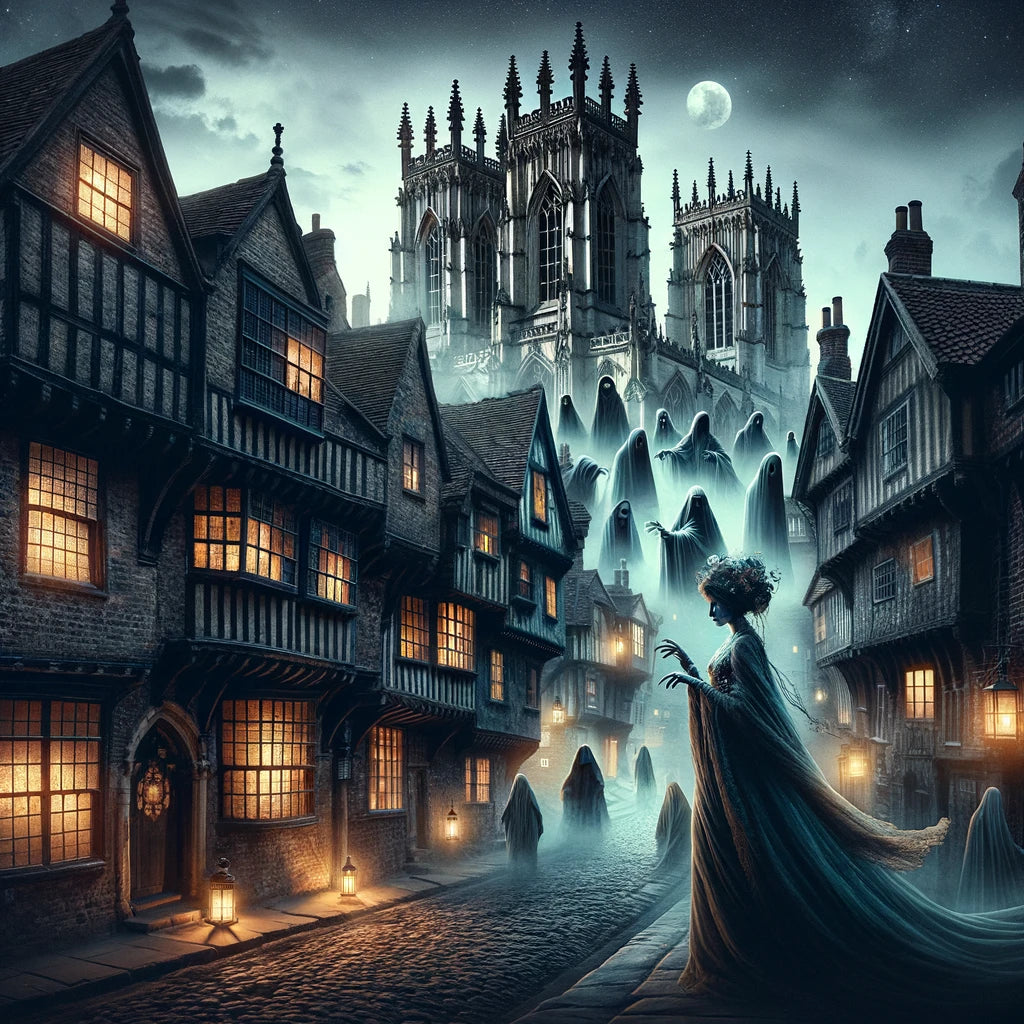
York - The City of 1000 Ghosts
Share
York, often referred to as the "City of a Thousand Ghosts," holds this title due to its rich and tumultuous history, which has given rise to numerous tales of hauntings and ghostly occurrences. With its origins dating back to Roman times, and periods under Viking and Norman control, York has been a significant historical and cultural centre for centuries. This long history is peppered with battles, tragedies, and events that have contributed to its reputation as one of the most haunted cities in England, if not the world.
Factors that contribute to York's ghostly reputation
Ancient Origins: York's history stretches over 2000 years, encompassing Roman, Viking, and medieval periods, among others. Each era has left its mark on the city, including its architecture, its streets, and potentially, its spectral inhabitants.
Tragic Events: York has been the site of many battles, sieges, and tragedies over the centuries, including the infamous massacre of its Jewish population in 1190. Such events are believed to contribute to the city's hauntings.
Preserved Historic Environment: The well-preserved historical environment of York, including its narrow streets, ancient buildings, and the imposing York Minster, provides a perfect backdrop for tales of hauntings. The city's old-world atmosphere can make the idea of ghosts from centuries past seem all the more plausible.
Numerous Reported Sightings: There have been countless reports of ghost sightings and paranormal experiences in York. From the Roman soldiers seen in the cellar of the Treasurer's House to the Grey Lady of the Theatre Royal, these tales add to the city's haunted reputation.
Popular Ghost Tours: York embraces its ghostly reputation with numerous ghost walks and tours, highlighting the city's haunted locations and telling the stories of its specters. These tours are popular with locals and tourists alike, further cementing York's association with the supernatural.
The combination of York's ancient past, its catalog of tragic and dramatic events, and the perpetuation of ghostly tales through popular tours and stories, all contribute to its nickname as the "City of a Thousand Ghosts."
York's spectral lore is as rich and varied as its history. Here are a few intriguing tales that capture the imagination and have chilled the spines of many:
The Roman Legionnaires of the Treasurer's House

One of the most famous ghost stories in York involves the apparition of a Roman legion seen in the cellar of the Treasurer's House. In 1953, Harry Martindale, a young apprentice heating engineer, was working in the cellar when he heard a horn and saw a horse emerge from the wall, ridden by a disheveled Roman soldier. This was followed by a column of soldiers marching through the cellar, visible only from the knees up, suggesting they were walking on the level of a Roman road buried beneath the modern floor. This sighting has become one of the most compelling ghost stories in York, hinting at the city's deep Roman roots.
The Grey Lady of the Theatre Royal

The Theatre Royal, built on the site of the medieval St. Leonard's Hospital, is said to be haunted by the Grey Lady, believed to be the ghost of a nun. The story goes that she was buried alive as punishment for breaking her vows of chastity. She is mostly seen in the dress circle, causing cold spots and a gentle presence. Some say she appears to be searching for her lover or perhaps seeking redemption.
The Shambles' Whispering Ghosts

The Shambles, one of York's oldest streets, renowned for its overhanging timber-framed buildings, dating back as far as the 14th century, is said to be haunted by the whispers of the past. People have reported hearing their names called by unseen voices and the sounds of invisible crowds, suggesting the bustling marketplace it once was, frequented by butchers and traders.
The Plague Victims of Bedern

The narrow and somewhat hidden Bedern archway leads to an area with a dark history as the site of a mass grave for plague victims. The area was once part of the College of the Vicars Choral, associated with York Minster. Late at night, it is said that the cries and whispers of the long-deceased can be heard, a somber reminder of the city's past suffering.
The Lost Souls of Clifford's Tower

Clifford's Tower stands as a stark reminder of one of York's darkest days - the massacre of its Jewish population in 1190. The victims, seeking refuge from a mob, chose mass suicide over capture. Their spirits are said to haunt the tower, with visitors often reporting an overwhelming feeling of sadness and despair around the structure.
These stories, each rooted in a different period of York's history, offer just a glimpse into the city's ghostly heritage. They reflect not only the city's tumultuous past but also its enduring memory, where history continues to whisper through the ages.
